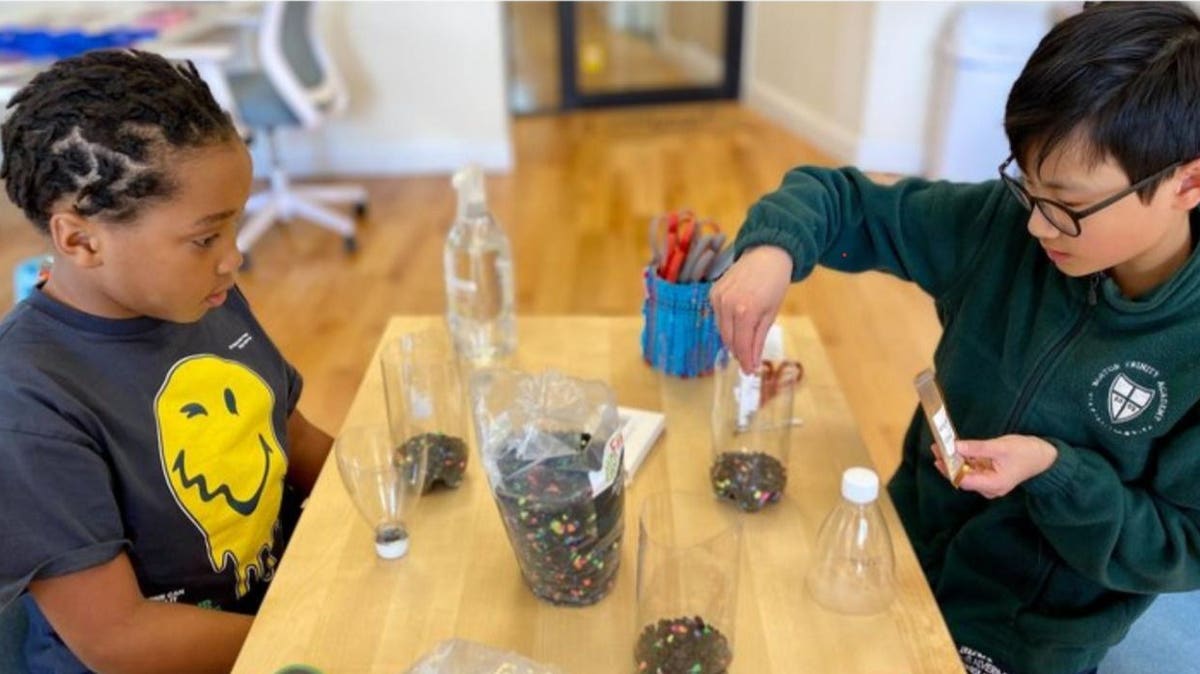In recent years, the education sector has been marred by concerns over teacher shortages. News reports and headlines have painted a grim picture, suggesting that we are running out of teachers.
However, let’s clear the air: there is no actual shortage of teachers. Teachers have not vanished into thin air; they just don’t want the job anymore. These professionals have simply become disillusioned with their profession. The traditional classroom model no longer appeals to many of them.
But what if there was a way to reignite the passion for teaching among educators? What if teachers could have the freedom to teach on their terms, earn a decent living wage, and make a more significant impact on their communities?
The Promise of Microschools
Opening their own microschool is the golden opportunity that many teachers have been waiting for. It’s a chance to reshape the educational landscape, not only for themselves but for the students they serve.
Microschools are small, community-based learning environments that offer personalized education to students. They typically have 10-15 students and are often led by passionate educators eager to create a unique learning experience. Here’s why teachers are jumping at the opportunity to start microschools:
- Teaching on Their Terms: Microschools allow teachers to design their curriculum and teaching methods, giving them the autonomy they crave.
- Earning a Living Wage: Unlike traditional teaching roles, microschool founders have the potential to earn a competitive salary, making teaching a financially viable career choice.
- Greater Impact: With smaller class sizes, teachers can form deeper connections with students and make a more profound impact on their academic and personal growth.
The Road to Microschool Success
Starting a microschool is undoubtedly rewarding, but it’s also a challenging endeavor. Fewer than 10% of people who set out to start a school end up doing so. KaiPod Learning is aiming to change that statistic through KaiPod Catalyst, the nation’s first microschool accelerator.
Here’s how:
- Sharing Knowledge: As the country’s largest owner/operator of microschools, we’ve learned through trial and error. Our mission is to share this knowledge with microschool founders, making their journey smoother.
- Building a Community: We’re on a mission to create the world’s largest community of microschool founders. Microschool founders who have a community of other founders to learn from are more likely to succeed.
- Strategic Partnerships: We’ve developed partnerships with the largest networks of online schools and homeschool organizations. These partnerships help with curriculum development and student recruitment, two critical aspects of microschool success.
- Long-Term Support: We are committed to being alongside our founders for the long haul. We understand that challenges will arise as they launch and scale their microschools, and we’re here to provide unwavering support.
While it’s possible to embark on the microschool journey alone, working with a community can significantly improve the odds of success. In the first cohort of KaiPod Catalyst, 60%+ of the founders have already launched a school, compared to the national average of 10%.
The Bottom Line?
Public schools are struggling to cope with the realities of today and mired in a morass of political battles. Those who believe that private schools can transform education underestimate the amount of financial capital that will be required. Not to mention, both of these transformations will take decades to achieve.
Microschools, a modern reimagining of the one-room schoolhouse, are on a completely different trajectory. With KaiPod Catalyst’s support, an entrepreneurial educator can launch a microschool in just a few months and with very little startup capital. They only need 10-15 students to reach financial sustainability and deliver outstanding academic outcomes. Most states even allow microschools to operate in a permissionless manner, making system-wide transformation much more likely than other means. With the rapid adoption of education savings accounts by many states, parents can get financial support for opting into these alternatives.
Now, we must encourage more educators to take the leap to entrepreneurship and create high-quality microschools in every community in America. After all, the American story has always been one of passionate entrepreneurs taking charge and breaking down the barriers to reform.
Read the full article here





